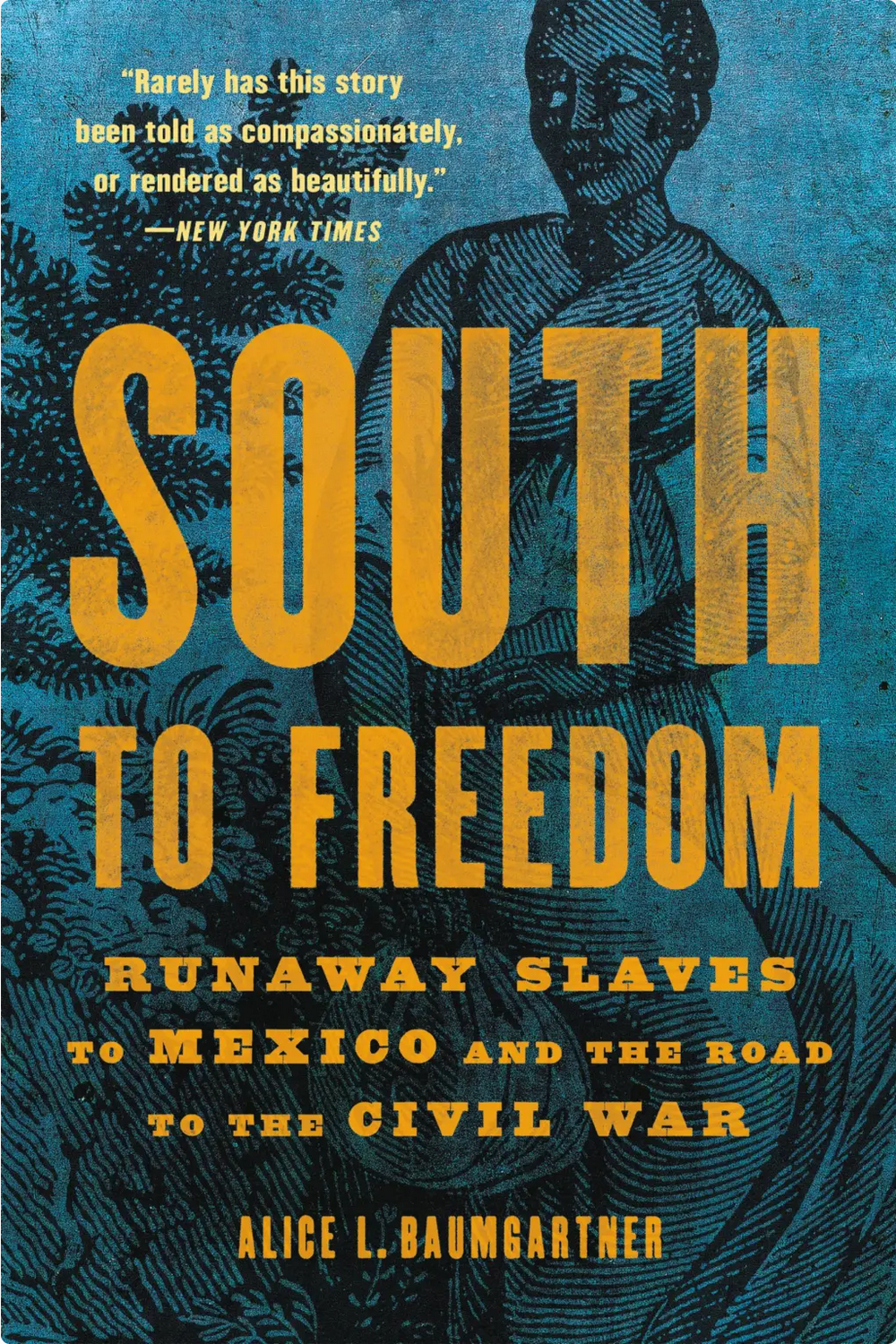Why has Mexico been largely neglected by previous historians of fugitives from slavery?2 Part of the answer lies in the numbers: whereas between 30,000 and 100,000 runaways crossed the Mason-Dixon Line, only around 3,000 to 5,000 ran away to Mexico. The Underground Railroad, which had at least five major arteries going north, was a more available escape route than the one to Mexico.3 Perhaps more important, among the Mexico-bound fugitives there were apparently no writers who left behind memorable narratives of enslavement, flight, and freedom like those of Douglass or Jacobs.
In the absence of such first-person records, South to Freedom understandably lacks a viscerally human perspective. But Baumgartner, who teaches history at the University of Southern California, does a fine job of piecing together the stories of obscure fugitives during the years between 1810 and 1860 on the basis of fragmentary archival evidence: court records, government documents, letters, newspaper articles, and so on. She tells, for example, of the sailors George and James Frisby, enslaved brothers who escaped from a New Orleans ship when it was anchored near Veracruz. She relates the story of four Louisiana slaves—Martin, Samuel, Fivi, and Richard—who in 1819 stole two horses and a mule and made the grueling trek westward to Mexico; though pursued, they evidently succeeded in gaining freedom, since there is no record of their returning to Louisiana.
Enslaved Blacks, Baumgartner notes, were not the only oppressed people who sought asylum in Mexico. Especially moving is the tale of the Seminole leader Wild Cat, who in 1833 had been forcibly removed with his tribe from Florida to Indian Territory (later Oklahoma). In 1849 he persuaded 351 people—three quarters of them Native Americans, the remainder Blacks who lived in their midst—to resettle in Mexico. Wild Cat told the Mexican authorities that he fled because he wished to leave a nation that had treated him “without conscience.” The US appears in Baumgartner’s book as amoral in its treatment of marginalized peoples, in contrast to Mexico, which, despite ongoing political instability, had a more accepting attitude toward those of different ethnicities. On the issue of slavery, Baumgartner writes, “Mexico’s policies, however numerous and varied, were consistent in one respect: they would not permit slavery to expand unchecked.”
Like most countries, Mexico had a history of slavery. Before 1821, when it was under the control of Spain, chattel slavery was an established institution there. But even during the Spanish period, the enslaved had certain legal protections; they could purchase their freedom, and they could go to court if they were abused.
